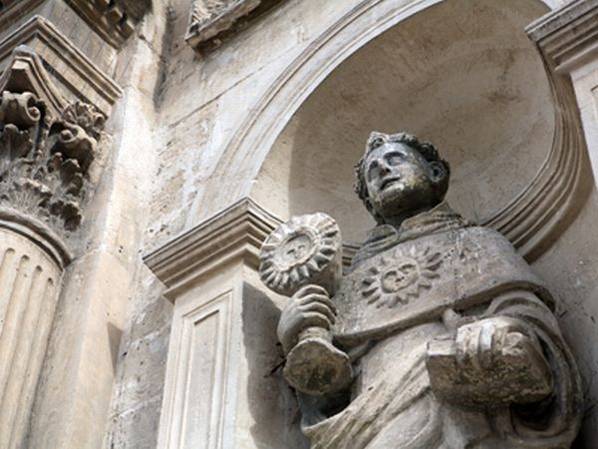
The majestic Lanfranchi Palace was built between 1668 and 1672 by Francesco da Copertino, friar of the Order of the Capuchins, as a diocesan seminary by the will of the Archbishop of Matera Vincenzo Lanfranchi, in observance of the dictates of the Council of Trent, which provided for diocese the presence of a place for the formation of the clergy. Erected on the pre-existing convent of the Carmelite Fathers, whose order was suppressed in 1652, the building was the site of the seminary until 1864. Demanialized by the Piedmontese government after the unification of Italy it interrupted its preparation for the priesthood becoming the headquarters of the Lyceum Classic and National Boarding School. A high school in which between 1882 and 1884 the poet Giovanni Pascoli taught among other teachers. Palazzo Lanfranchi is currently home to the National Museum of Medieval and Modern Art and the Carlo Levi Center, where it is possible to admire a wide range of paintings by the painter Torinese Levi, centered on the representation of the Lucanian peasant world and the D’Errico collection.
The Museum develops on the Noble Floor of the Palace with an exhibition itinerary structured in three sections: Sacred Art, Collecting and Contemporary Art, within which, through a system of rotation and alternation of works of art art, related topics are explored from time to time. Along the perimeter corridors of the cloister, on the ground floor of the building, the Documentation Center consisting of the specialized library, the catalog and the photo library, large rooms for reception services and the library are available to the public and scholars. The rooms named after Carlo Levi that house the large panel “Lucania ’61”, a work he presented to you in Turin for the centenary of the Unification of Italy, are intended for cultural events and temporary exhibitions.
The facade, in local stone, develops on two orders and harmoniously merges, in a single elevation, the entrance of the seminary and the pre-existing church of Carmine. The upper part is marked by 9 arches of which one is free while the others are closed. The front is enriched by 5 statues placed in niches: on the left San Nicola, in the center, at the top, the Madonna, on the right San Filippo Neri, San Giacinto and San Carlo Borromeo.
The staircase gives access to a long corridor that leads to a beautiful seventeenth-century cloister enriched by the sundial of the second half of the seventeenth century and by busts reminiscent of those who generously contributed to the construction of the grandiose building: Archbishop Lanfranchi and his three brothers, the bishops Brancaccio and Del Ryos and Duke Marco Malvinni Malvezzi, generous patron, allocated in the entrance overlooking the Piazzoli Pascoli.